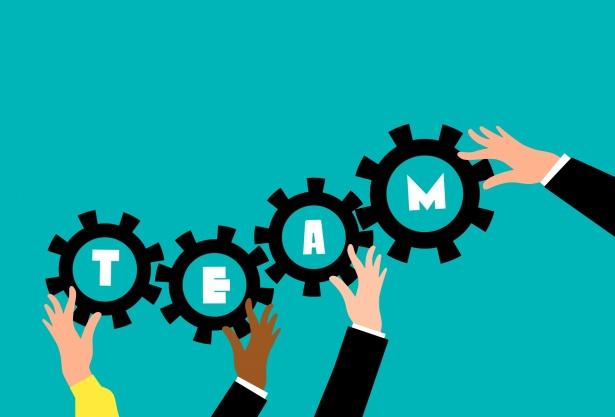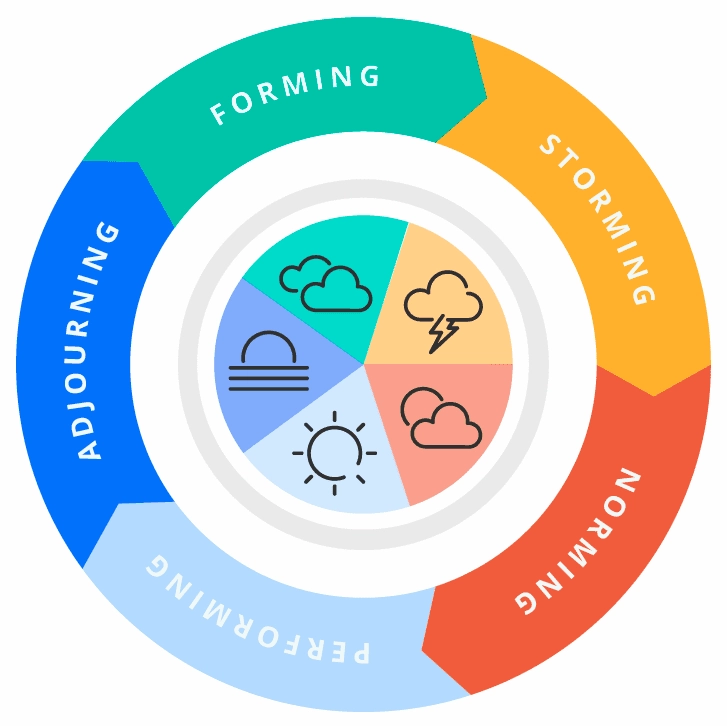Project Team Development
Projects are composed of teams, and teams are composed of individuals. Just as people evolve and grow, so do our project teams. Development and progress are inherent to both humans and our collaborative efforts.
In the same way that individuals continuously learn and improve, project teams also undergo a process of growth and development. As team members gain experience, acquire new skills, and foster a deeper understanding of their roles, the project as a whole benefits from this collective evolution and while we may wish for "clear skies" and "sunny days," the reality is that the journey is often marked by challenges and obstacles and some of those hurdles come from within the project team.

Tuckman's Team Life Cycle
To understand this better let's look into what Bruce Tuckman developed in 1965, better known as Tuckman's Team Life Cycle, which describes the natural progression that teams typically undergo as they evolve and mature.
According to Tuckman's Team Life Cycle, there are five stages of development, let's take a closer look at them below.
Forming: It is the first stage of team development, the team is introduced, gets acquainted and members start to find their place within the team. Good intentions are present but trust is not there yet.
Activities that would help during this stage and facilitate a smooth transition into the next would be team building activities, icebreakers, face-to-face meetings, having clear objectives, well-defined and understood team roles, and clear communication.
For example, I have changed the regular meeting format from a meeting room to having more of a conversation during lunch with the team.
Storming: Reality kicks in, as well as personalities, the weight of the project is settling in, egos may start to show up and tempers may flare. Disagreements are present and the excitement is gone. This stage could pass quickly or stay for some time. It is a critical phase in team development, as it sets the stage for growth.
Effective conflict resolution, open dialogue, strong leadership, and encouraging active participation from all team members toward common goals are essential to move through this stage successfully.
A personal experience involved a disagreement from two team members on how to address a particular situation. One blamed the other for lacking overall experience in the matter, while the other claimed that it was not the way things are done in the company. This was an example of personalities and egos coming into play. To address this conflict and move forward, I had an open one-on-one dialogue with both members. I aimed to create awareness of each other's strengths and value, while reminding them of our shared team goal.
Norming: As the team works through conflicts and differences, things settle down and the team works together toward a common goal, entering the norming stage. A sense of cohesion begins to develop and everyone knows their place. Team members start to understand each other's strengths and weaknesses and collaborate more smoothly toward shared goals but, if a new challenge appears, the team could fall back into the storming stage.
A good practice is to facilitate team cohesion and ensure that each team member identifies with the team's purpose and values, and to motivate towards success while fostering mutual support.
Performing: Efficiency. Each team member understands everyone's strengths and weaknesses and they are familiar enough with each other to help. The team is confident and motivated. Trust and mutual respect have been established, and the focus is on achieving exceptional results through effective collaboration and problem-solving.
Keep doing what you're doing! And don't forget to reward your team.
In one of my projects, one of the memories I cherish the most is gathering the team together to celebrate a successful completion of the last milestone with an enjoyable dinner at the project site.
Adjourning (or mourning): It is time to say goodbye, the team disbands after completing the project or achieving its goals. Team members reflect on their accomplishments, celebrate success and say their goodbyes. It is a stage essential for closure, carrying out lessons learned, and transitioning into new endeavours.
Tuckman's Team Life Cycle - Five Development Stages

Understanding this model can help project managers and members navigate the challenges and opportunities at each stage, understanding what the team needs and the best way to provide support, fostering effective teamwork and optimal communication.
Recognizing the parallels between personal growth and team development can lead to a more holistic approach to project management. By nurturing and supporting the growth of each team member, we enhance the overall capability and efficiency of the project team.
In conclusion, embracing the notion that projects are driven by people and that these people continually evolve and improve, allows us to create more successful and impactful efforts. Let us foster an environment where both individual and team growth are encouraged and celebrated, resulting in remarkable achievements for our projects and the people behind them.



